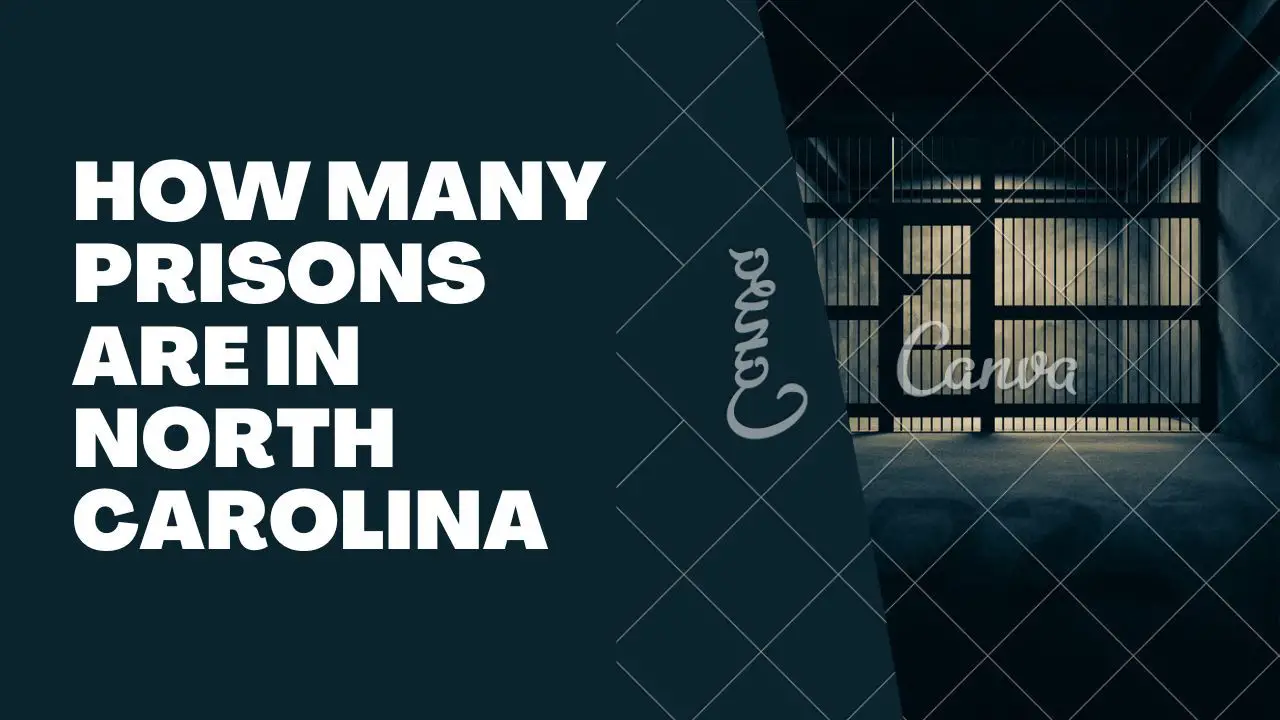How Many Prisons are in North Carolina
In this blog, we will delve into the world of North Carolina's prison system, with a particular focus on the number of prisons in the state.

When it comes to the topic of prisons, it's crucial to have a comprehensive understanding of the correctional system in North Carolina. Behind the walls of these institutions lie stories of justice, rehabilitation, and societal impact.
In this blog, we will delve into the world of North Carolina's prison system, with a particular focus on the number of prisons in the state.
Overview of North Carolina's Prison System
North Carolina boasts a complex state correctional system comprising various types of prisons. Each state prison serves a unique purpose within the larger framework, from minimum security facilities to supermax custody institutions.
To fully grasp the scope of the system, it's essential to understand the number and nature of state prisons in North Carolina.
As of the latest available information, North Carolina has a total of 57 state prisons spread across the state. These prisons are solely dedicated to housing and managing inmates convicted of state crimes. They are crucial in maintaining public safety, administering justice, and promoting rehabilitation.
Each state prison in North Carolina is designed to accommodate inmates based on their security needs, risk levels, and programming requirements. Classifying prisons into different security levels ensures that inmates receive appropriate supervision and support while incarcerated.
Among the various types of state prisons in North Carolina, minimum security facilities primarily house non-violent offenders who pose minimal security risks.
These prisons provide a more relaxed environment, allowing inmates to participate in work release programs, community service, and educational opportunities. The focus is preparing inmates for successful reintegration into society upon release.
In contrast, North Carolina also has medium security, close custody, and maximum custody prisons that cater to inmates with higher security needs. These facilities employ enhanced security measures and stricter regulations to maintain order and ensure the safety of both inmates and staff.
Read How many state prisons are in Florida?
Different Types of Prisons in North Carolina
North Carolina's prisons can be categorized based on the level of security they provide.
Let's explore these security levels to better understand the types of inmates they house and the security measures in place.
Minimum Security Prisons: Also known as "camp" prisons, these facilities cater to non-violent offenders who are approaching the end of their sentence. With less stringent security measures, inmates may participate in work release programs and engage in activities beyond the prison walls.
Medium Security Prisons: These facilities house inmates with moderate security needs. They strike a balance between security and the provision of programs aimed at rehabilitation and reintegration.
Close Custody Prisons: Designed for offenders who require more supervision and control, close custody prisons focus on maintaining order and security within the facility. Inmates in these prisons have limited movement and fewer privileges compared to those in lower-security institutions.
Maximum Custody Prisons: As the name suggests, maximum custody prisons house high-risk inmates who have committed serious offenses. Stricter security protocols are in place to ensure public safety, and inmates have limited contact with the outside world.
Read List of Female Federal Prisons in Texas
Supermax Custody Prisons: These prisons are reserved for the most dangerous and violent offenders. Inmates in supermax custody spend most of their time in solitary confinement and have minimal interaction with staff and other inmates. These facilities prioritize the highest level of security to prevent further criminal activity.
Historical Background of North Carolina's Prison System
North Carolina's prison system traces its roots back to the early 1900s and has undergone significant transformations over the years. Initially, the focus was primarily on punishment and deterrence. However, as time progressed, a shift toward rehabilitation and education took place, with programs designed to aid inmates in their reentry into society.
In the 1990s, there was a resurgence of a more punitive approach to incarceration, resulting in a sharp increase in the state's prison population and overcrowding issues. To counter these challenges, North Carolina initiated efforts to reduce the number of inmates and enhance conditions within correctional facilities.
So How Many State prisons are in North Carolina?
The number of state prisons in North Carolina is 57. Other than that, many federal prisons, small counties, and private jails are available. To provide a clear picture of the state's correctional system, it's essential to have an overview of the state prisons in North Carolina.
The state currently operates several correctional institutions spread across different regions. Here is a list of some of the state prisons in North Carolina:
- Albemarle Correctional Institution: This medium-security prison houses adult male offenders in New London. It provides educational programs, vocational training, and substance abuse treatment to support inmate rehabilitation.
- Alexander Correctional Institution: Situated in Taylorsville, this close custody facility accommodates adult male inmates. It emphasizes security measures while also offering educational and vocational opportunities to prepare inmates for reintegration into society.
- Avery-Mitchell Correctional Institution: Found in Spruce Pine, this minimum-security prison focuses on preparing non-violent offenders for their eventual release. Inmates can take part in work release programs and get academic and professional training.
- Bertie Correctional Institution: Located in Windsor, this medium-security prison houses adult male offenders. It provides various educational and vocational programs to promote rehabilitation and reduce recidivism.
- Bladen Correctional Center: Situated in Elizabethtown, this minimum-security facility primarily houses adult male inmates. It offers educational and vocational opportunities, as well as substance abuse treatment programs.
- Brown Creek Correctional Institution: Found in Polkton, this close custody prison primarily houses adult male offenders. It emphasizes security and supervision while offering educational and vocational programs supporting inmate rehabilitation.
- Caldwell Correctional Center: In Lenoir, this minimum-security facility houses adult male inmates. Through educational, vocational, and addiction treatment services, the program focuses on preparing convicts for reentry.
- Carteret Correctional Center: This minimum-security prison accommodates adult male inmates in Newport. It provides various programs, including education, vocational training, and substance abuse treatment, to facilitate successful social reintegration.
- Caswell Correctional Center: Found in Blanch, this close custody facility primarily houses adult male offenders. It offers security measures along with educational and vocational programs to support inmate rehabilitation.
- Catawba Correctional Center: Located in Newton, this minimum-security prison primarily houses adult male inmates. It emphasizes reentry preparation through education, vocational training, and substance abuse treatment programs.
North Carolina State Prisons Our Conclusion
Understanding the prison system in North Carolina goes beyond simply knowing the number of prisons. It requires an awareness of the different types of prisons, their security levels, and the historical context that shaped the state's correctional system.
By grasping these aspects, we gain insight into the challenges faced and the efforts made to enhance the effectiveness and efficiency of the system. Ultimately, having this knowledge allows us to engage in informed discussions and contribute to meaningful changes within the North Carolina correctional system.
